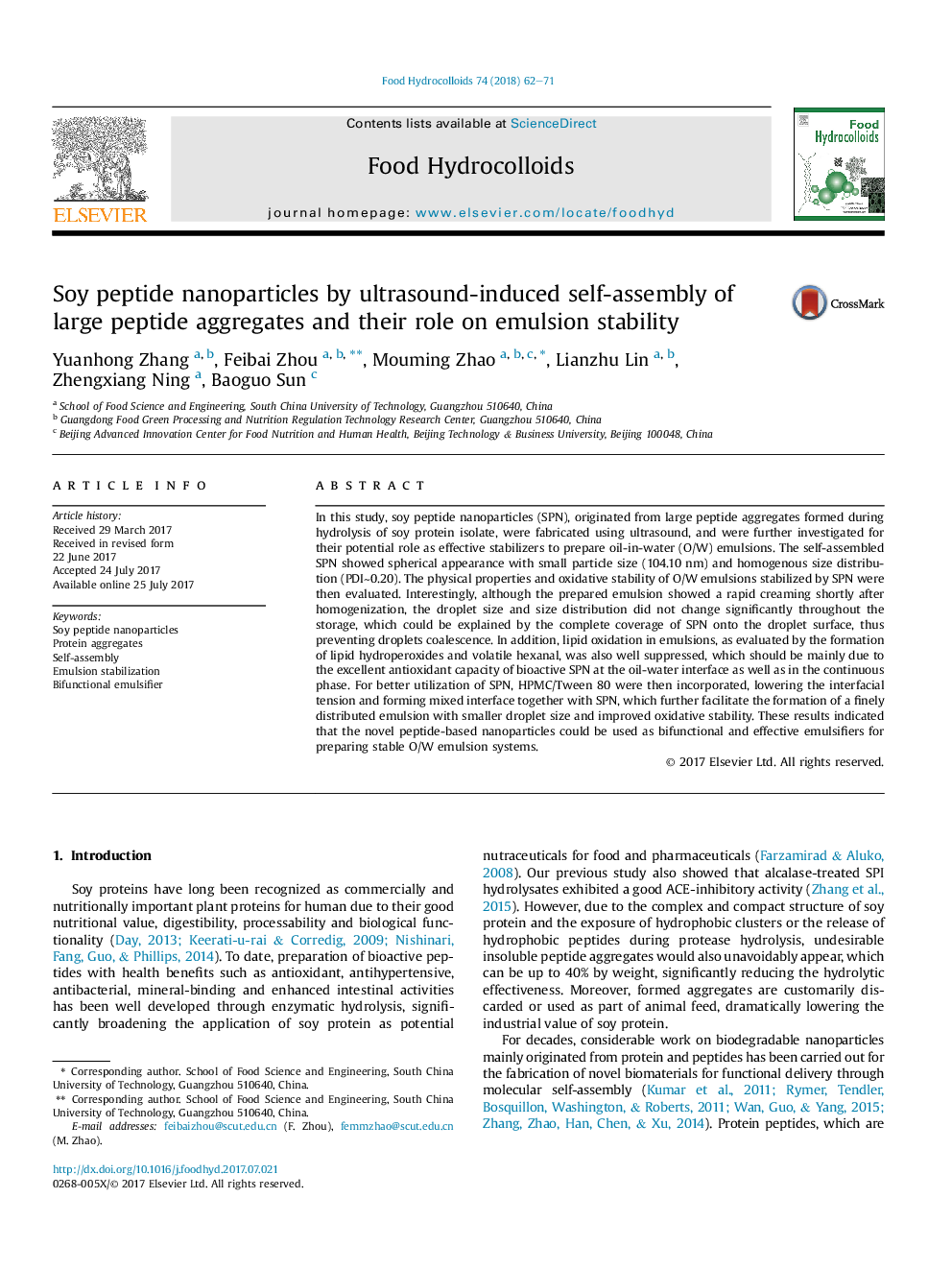| کد مقاله | کد نشریه | سال انتشار | مقاله انگلیسی | نسخه تمام متن |
|---|---|---|---|---|
| 4983724 | 1454403 | 2018 | 10 صفحه PDF | دانلود رایگان |
- Soy peptide nanoparticles (SPN) were fabricated by ultrasound-induced self-assembly.
- SPN-stabilized O/W emulsion was stable against coalescence during storage.
- Complete coverage of SPN on droplet surface improved emulsion physical stability.
- Bioactive SPN could significantly improve oxidative stability of the emulsions.
- The bifunctional SPN could act as a novel emulsifier to prepare stable O/W emulsions.
In this study, soy peptide nanoparticles (SPN), originated from large peptide aggregates formed during hydrolysis of soy protein isolate, were fabricated using ultrasound, and were further investigated for their potential role as effective stabilizers to prepare oil-in-water (O/W) emulsions. The self-assembled SPN showed spherical appearance with small particle size (104.10Â nm) and homogenous size distribution (PDIâ¼0.20). The physical properties and oxidative stability of O/W emulsions stabilized by SPN were then evaluated. Interestingly, although the prepared emulsion showed a rapid creaming shortly after homogenization, the droplet size and size distribution did not change significantly throughout the storage, which could be explained by the complete coverage of SPN onto the droplet surface, thus preventing droplets coalescence. In addition, lipid oxidation in emulsions, as evaluated by the formation of lipid hydroperoxides and volatile hexanal, was also well suppressed, which should be mainly due to the excellent antioxidant capacity of bioactive SPN at the oil-water interface as well as in the continuous phase. For better utilization of SPN, HPMC/Tween 80 were then incorporated, lowering the interfacial tension and forming mixed interface together with SPN, which further facilitate the formation of a finely distributed emulsion with smaller droplet size and improved oxidative stability. These results indicated that the novel peptide-based nanoparticles could be used as bifunctional and effective emulsifiers for preparing stable O/W emulsion systems.
238
Journal: Food Hydrocolloids - Volume 74, January 2018, Pages 62-71
